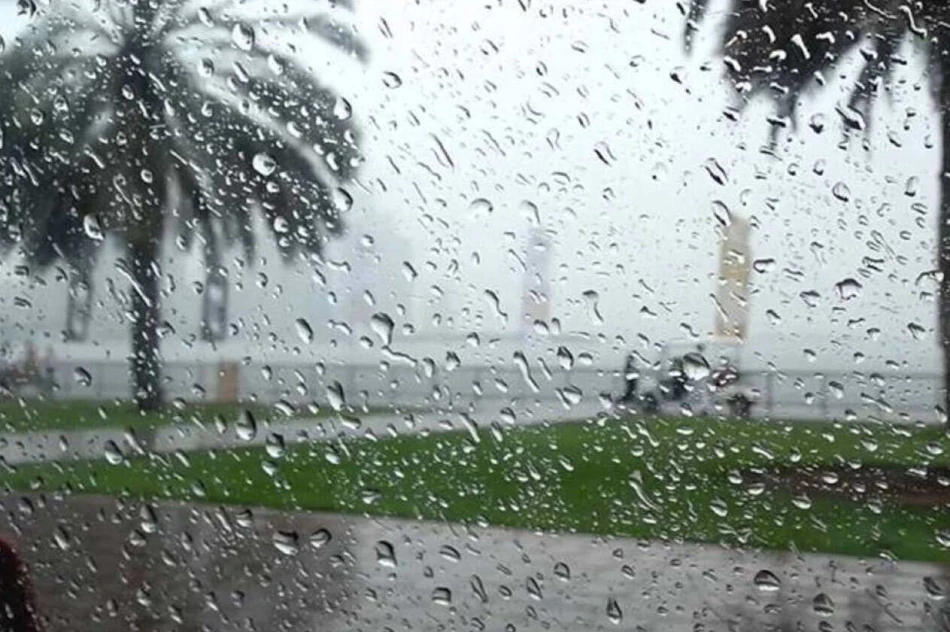
Partly Cloudy to Rainy Weekend Ahead: Plan Your Outdoor Activities Accordingly
UAE Braces for Five Days of Volatile Weather as Seasonal Transition Brings Fog, Rain, and Dust Storms
The UAE's National Center of Meteorology has issued a comprehensive weather forecast warning of unsettled conditions from September 20-24, marking a typical seasonal shift that could disrupt daily operations across the Emirates. The period will feature morning fog formation, afternoon thunderstorms in eastern regions, and dust-stirring winds reaching up to 40 km/h—a weather pattern that historically signals the country's gradual transition from extreme summer heat toward more temperate autumn conditions.
Weekend Kicks Off with Western Fog and Eastern Storm Potential
Saturday's weather will begin with high humidity across western regions, creating conditions ripe for fog and light mist formation during morning hours. This phenomenon, common during seasonal transitions in the UAE, occurs when cooler nighttime temperatures meet the lingering moisture from the summer months.
The day will progress from clear to partly cloudy skies, with cumulus clouds expected to develop over eastern areas after midday. These afternoon cloud formations carry the potential for rainfall—a welcome prospect for a nation that receives less than 100mm of precipitation annually. Wind patterns will shift from southeast to northeast directions, maintaining light to moderate intensity but occasionally intensifying to stir dust particles at speeds reaching 35 km/h.
Maritime Conditions Remain Favorable
Both the Arabian Gulf and Sea of Oman will experience light wave conditions on Saturday, providing optimal conditions for maritime activities and port operations—crucial for a country that handles significant cargo traffic through its major ports in Dubai, Abu Dhabi, and Fujairah.
Mid-Week Intensification Brings Stronger Winds and Rain Chances
Sunday through Tuesday will see an escalation in weather volatility, with fog formation expanding from coastal to inland areas during morning hours. This widespread fog development poses potential challenges for the UAE's aviation sector, which operates some of the world's busiest international airports.
The most significant development will occur on Sunday and Tuesday, when wind speeds are forecast to reach 40 km/h. These stronger winds, combined with the UAE's desert landscape, will likely generate dust storms that could reduce visibility and impact outdoor construction projects—a critical consideration for a country with ongoing infrastructure development worth billions of dollars.
Eastern Regions Face Afternoon Thunderstorm Risk
Eastern areas, including the emirates of Fujairah and parts of Sharjah, face the highest probability of rainfall during afternoon hours. This pattern aligns with the UAE's typical precipitation distribution, where mountainous eastern regions receive more rainfall than the western desert areas due to orographic lifting effects.
Temperature Relief on the Horizon
Tuesday's forecast brings promising news with a gradual temperature decrease, signaling the beginning of the UAE's most comfortable weather period. This temperature drop represents a significant economic opportunity, as cooler conditions traditionally boost outdoor tourism activities, construction productivity, and reduce energy consumption for cooling—factors that collectively impact the country's GDP.
Week Concludes with Rougher Seas and Shifting Wind Patterns
Wednesday will mark a notable shift in maritime conditions, with the Arabian Gulf experiencing moderate to rough waves while the Sea of Oman maintains lighter conditions. This disparity reflects changing pressure systems across the region and could affect shipping schedules and offshore operations in the oil and gas sector.
Wind patterns will rotate to northwesterly directions, maintaining the dust-stirring potential at speeds up to 40 km/h. Low-lying clouds will appear over northern and eastern regions, potentially providing some relief from direct solar radiation.
Broader Implications for UAE's Economy and Daily Life
This five-day weather period exemplifies the UAE's challenging climatic conditions that the country has learned to navigate through advanced meteorological services and infrastructure planning. The forecast's combination of fog, dust storms, and temperature fluctuations will test the resilience of the nation's transportation networks, construction schedules, and energy grid.
For residents and businesses, this weather pattern serves as a reminder of the importance of flexible planning during seasonal transitions. The potential for improved conditions by mid-week, particularly the temperature decrease, offers a preview of the approaching winter season—traditionally the UAE's peak period for tourism, outdoor events, and construction activity.
Most Viewed News

 Sara Khaled
Sara Khaled






